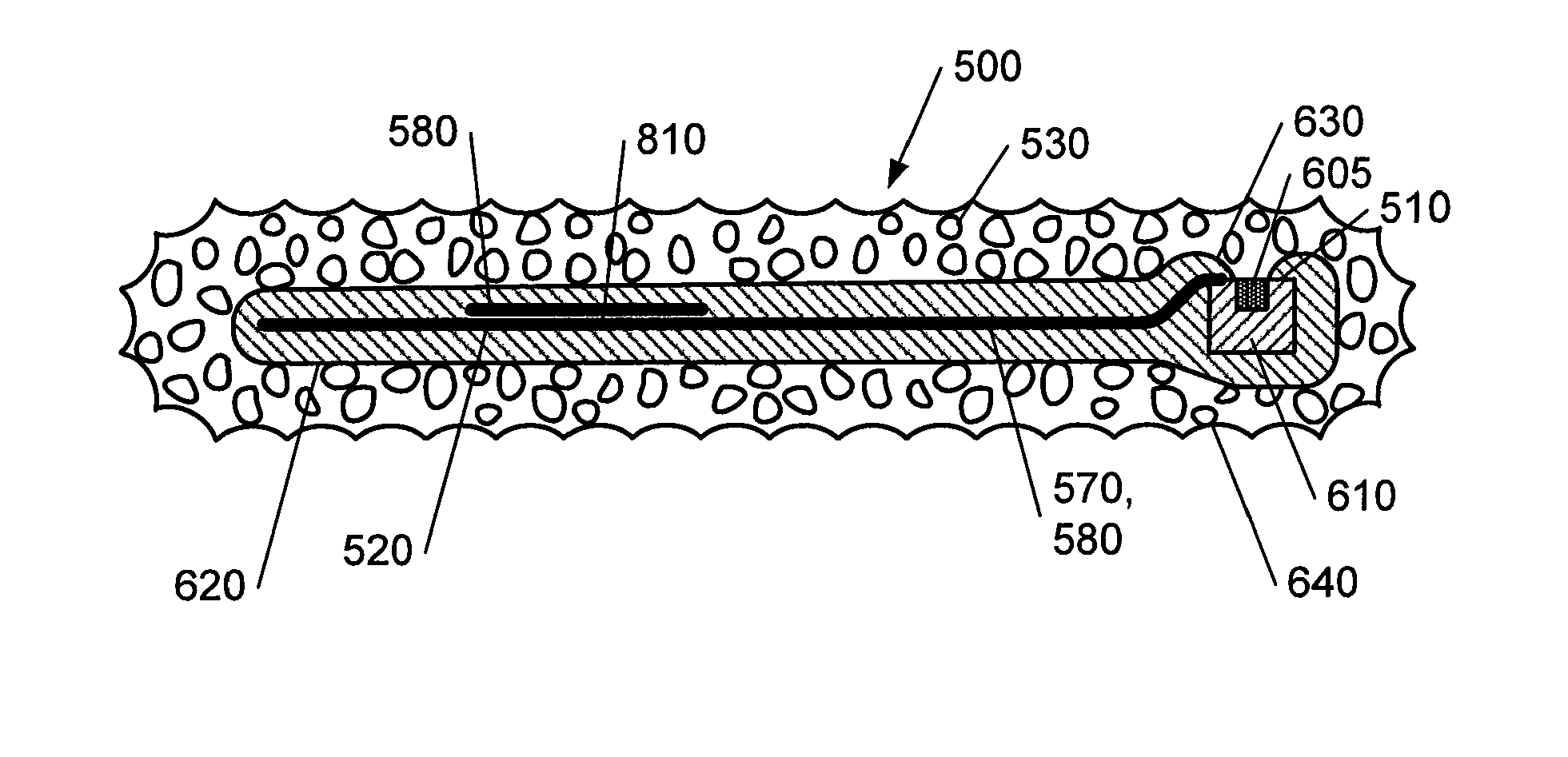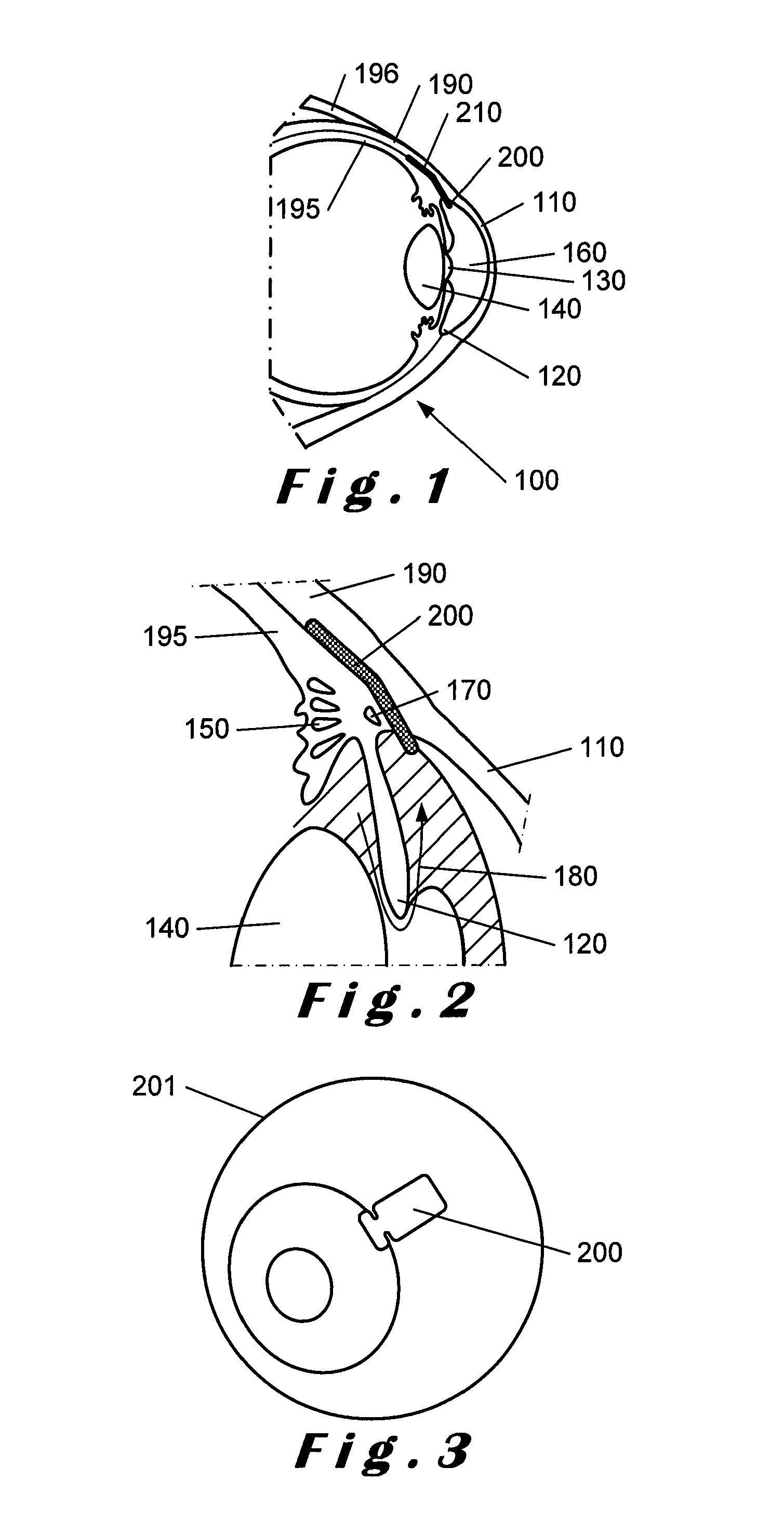Device and method for glaucoma management and treatment
a technology for glaucoma and glaucoma patients, applied in the field of devices and methods, can solve the problems of irreversible damage to the optic nerve, significant changes in the iop related to the cardiac cycle, and loss of vision, and achieve the effects of reducing the number of patients, and improving the quality of li
- Summary
- Abstract
- Description
- Claims
- Application Information
AI Technical Summary
Benefits of technology
Problems solved by technology
Method used
Image
Examples
first embodiment
[0091]In FIG. 4, a plan view of a combined IOP sensor and glaucoma drainage device 400 in accordance with the present invention is shown. The device 400 comprises an IOP sensor element 410 connected to an antenna element 420 as shown. The IOP sensor element 410 also includes a signal processor (not shown) as will be described in more detail below. The IOP sensor element 410 and the antenna element 420 are located between layers of a porous biocompatible material 430, for example, the porous biocompatible material as described above. This is described in more detail with reference to FIGS. 6 to 8 below. The biocompatible material 430 defines the overall shape of the device 400. In this embodiment, the antenna element 420 is shown as having a substantially circular profile.
[0092]Leads 470, 480 are provided for connecting the IOP sensor element 410 with the antenna element 420 as shown. As shown, the leads 470, 480 pass from the footplate portion 450 to the body portion 440 through the...
second embodiment
[0098]In FIG. 5, a plan view of a combined IOP sensor and glaucoma drainage device 500 is shown. The device 500 comprises an IOP sensor element 510 connected to an antenna element 520 as shown. The IOP sensor element 510 also includes a signal processor (not shown) as will be described in more detail below. The IOP sensor element 510 and the antenna element 520 are located between layers of the porous biocompatible material 530 as described above. This is described in more detail with reference to FIGS. 6 to 8 below. The biocompatible material 530 defines the overall shape of the device 500. In this embodiment, the antenna element 520 is shown as having a substantially rectangular profile.
[0099]Leads 570, 580 are provided for connecting the IOP sensor element 510 with the antenna element 520 as shown. As shown, the leads 570, 580 pass from the footplate portion 550 to the body portion 540 through the neck portion 560.
[0100]As shown, the device 500 comprises a substantially rectangul...
PUM
 Login to View More
Login to View More Abstract
Description
Claims
Application Information
 Login to View More
Login to View More - R&D
- Intellectual Property
- Life Sciences
- Materials
- Tech Scout
- Unparalleled Data Quality
- Higher Quality Content
- 60% Fewer Hallucinations
Browse by: Latest US Patents, China's latest patents, Technical Efficacy Thesaurus, Application Domain, Technology Topic, Popular Technical Reports.
© 2025 PatSnap. All rights reserved.Legal|Privacy policy|Modern Slavery Act Transparency Statement|Sitemap|About US| Contact US: help@patsnap.com



